Stonehenge During the Summer Solstice: all you need to know
The summer solstice is Stonehenge's big day. Thousands of people flock to the megalithic monument to see an event that mixes festivity with spirituality.
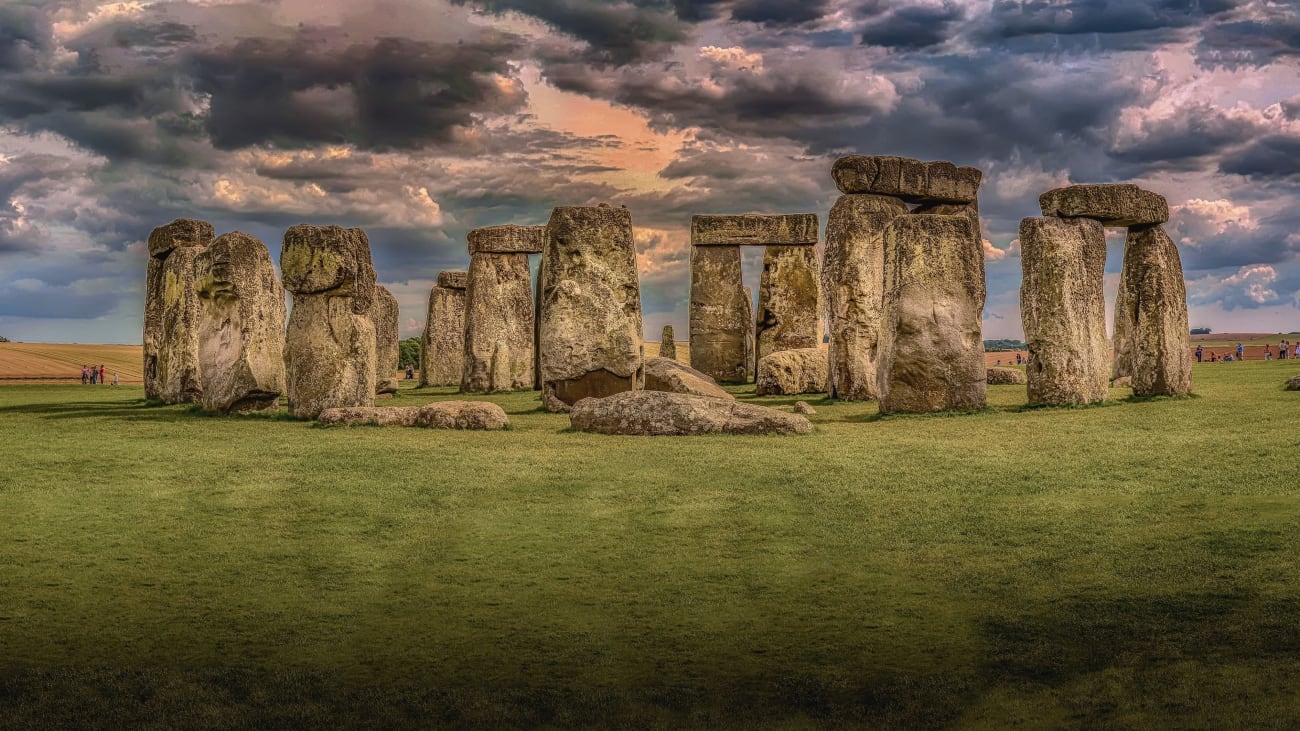
Stonehenge Under The Clouds | ©Pixabay
If you are lucky enough to be in London in summer, in the third week of June, you should not miss the summer solstice celebration held at the nearby megalithic monument of Stonehenge. Between the 20th and 21st of that month, large numbers of Britons and visitors from other countries gather for a magical day.
On this day, Stonehenge takes on a different dimension, combining festivity with an attempt to recall ancient pagan ceremonies. Visitors can enter the complex free of charge and take advantage of the opportunity to walk among the stones, which is not allowed during the rest of the year.
Watch the sunrise at Stonehenge on the 21st of June
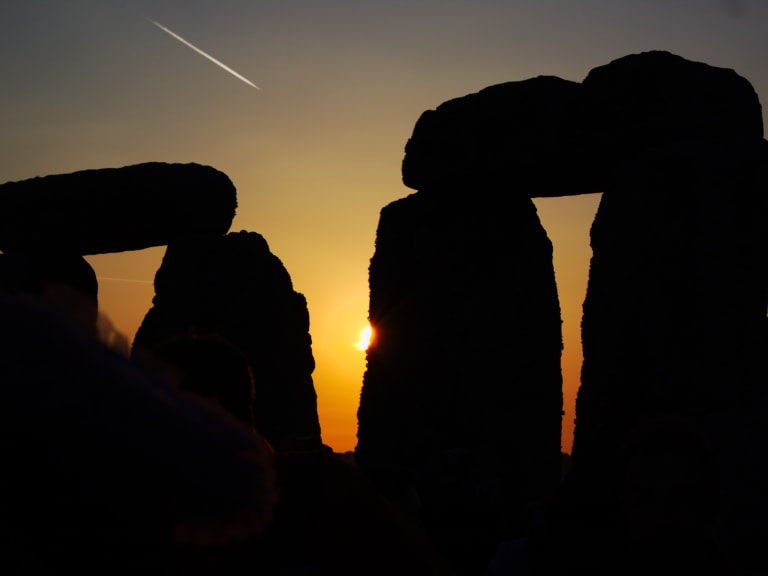
The word solstice comes from the Latin word solstitium, which can be translated as "still sun". One of these, the summer solstice (between 20 and 21 June), occurs at the peak of the day and is the best time to book a trip to Stonehenge. These days have always had a special significance, as they mark the changing of the seasons, so important to ancient agricultural cultures.
One of the many theories about the origin of Stonehenge relates it to precisely these celebrations. Although the purpose for which it was built has not yet been discovered, what is known for certain is that during the summer solstice the sun rises to the left of the Heel Stone and passes right through the central axis of the rock complex.
The mystery of its origin and the way the sunrise fits the constructions has made Stonehenge a place of pilgrimage. Thousands of people, many of them followers of new age philosophies or Druidism, come to the monument and spend the night creating an unrepeatable atmosphere. If you decide to go to see the sunrise, you should arrive very early. The complex opens its doors at first light and the car park cannot cope with the number of vehicles arriving.
Soak up the atmosphere
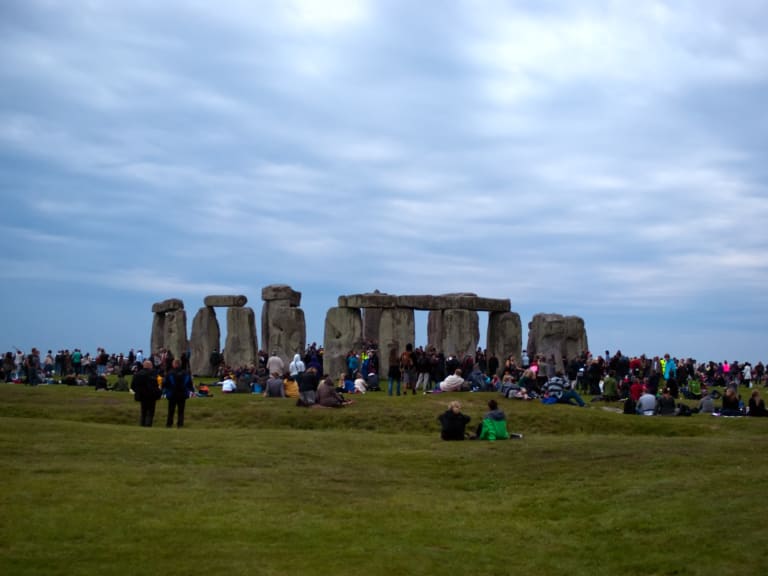
The first reaction of anyone arriving from London with a trip to Stonehenge on Midsummer's Day is likely to be one of awe. The complex and its surroundings are filled with an atmosphere that perfectly combines festivity and mysticism. During the evening, visitors can enjoy the music performed by those present, as well as dancing of all kinds.
One of the attractions of Midsummer's Day at Stonehenge is the people who come. Not even in the best musicals in the capital are you going to find so many costumes. Among these, in addition to the nymph, the druid costumes are particularly noteworthy. In fact, many consider druidism to be a true religion. They are easily recognisable by their clothing: Celtic-style robes, cloaks, staffs and jewellery. The women often wear crowns made of flowers and leaves, while the men grow their beards and hair long.
This colourful atmosphere increases as you get closer to the stone circle. This, the best known of Stonehenge's attractions, is filled with people meditating and even going into a kind of trance.
Joaquin's Traveller Tip
It is advisable to check on English Heritage's official Stonehenge website for the dates and times of the day's activities, as well as the exact time of sunrise (usually around 5am).
Watch the rituals

On your trip to Stonehenge, one of the things to look out for are the rituals that take place there. To understand them, it is necessary to know one of the many theories, more esoteric than scientific, about the origin of the monument. Thus, a doctor called William Stukeley claimed in the 18th century that Stonehenge had been built by the Druids to serve as a temple for them.
It mattered little that the dates did not add up, and the monument became a magnet for followers of Druidic beliefs, which are closely related to paganism.
The summer solstice is one of the magical moments in these beliefs and Stonehenge is the ideal place to celebrate it. Thus, many people set up real altars with candles and natural elements. Often, within the circle itself, these followers of the Druids chant and perform a pagan ceremony. Regardless of your beliefs, watching these rites in such a wonderful setting as Stonehenge is well worth the effort.
Enjoy the sunset
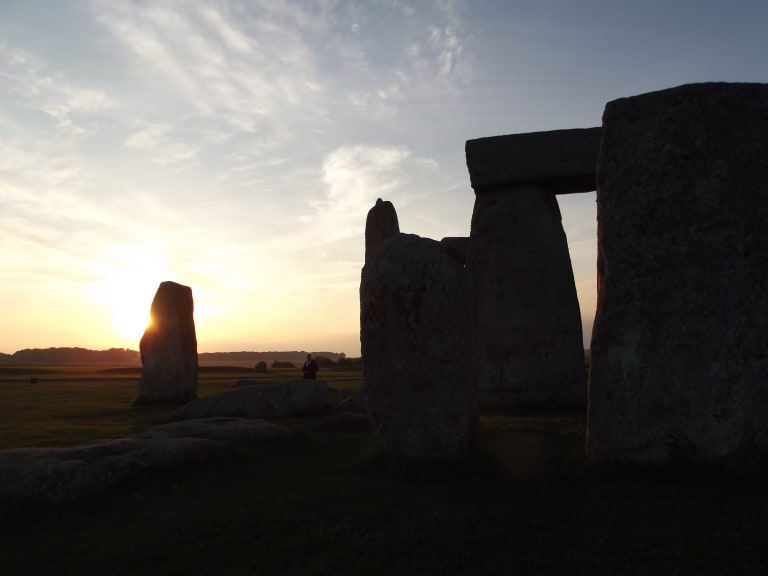
Although watching the sunrise on the 21st at Stonehenge is the most famous part, if you can get from London to Stonehenge the day before you will see that there are already many people waiting to watch the sunset on the 20th.
Those present bid farewell to our star to the rhythm of drums that will not stop playing for most of the night. The sun ends up hiding between the perfectly aligned stones of the monument, as if it were following a path marked out more than 4500 years ago.
Join the party

If you've already enjoyed London's night-time activities, spending a night at Stonehenge will feel like something completely different. During the solstice celebration there is not only an air of spirituality, but also a more or less unbridled party atmosphere. Attendees drink alcohol and dance during the hours between sunset on the 20th and sunrise on the 21st.
One thing to bear in mind if you book your Stonehenge tour and are planning to join the party, is that you are not allowed to bring backpacks or large bags into the inner grounds. Similarly, the controls in place ensure that no glassware or alcoholic beverages are brought in. Obviously, fires cannot be lit either.
Joaquín's Traveller Tip
although the atmosphere is generally good, alcohol can sometimes cause incidents. Choose an area where you feel comfortable to enjoy yourself without any problems.
Go to the stone circle
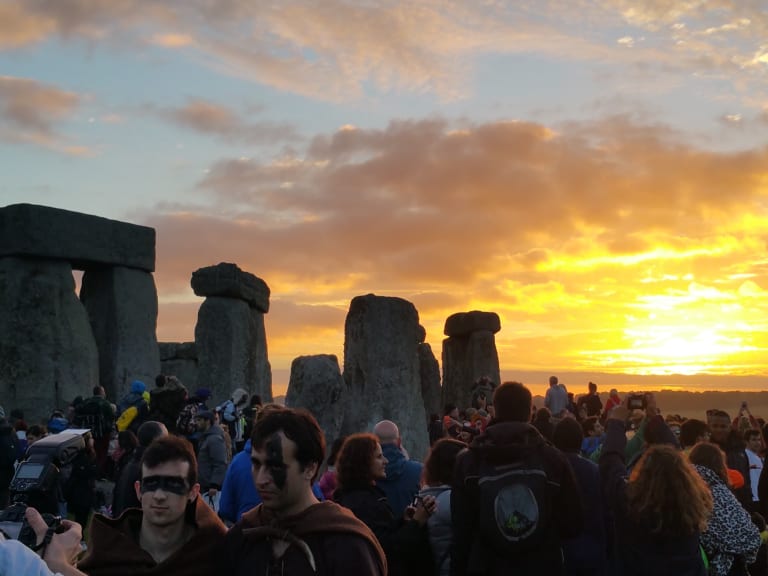
The day of the summer solstice is probably not the best time to enjoy the attractions of the monument. It's really about enjoying the spiritual atmosphere and the activities that the attendees are doing.
One of the things you should keep in mind to best enjoy the day is where to stand. If you can, look for a place where you can see the sunset or sunrise between the rocks. Something that is very interesting about this day is that you will be able to enter the interior of the stone circle, something that can only be done on rare occasions and if you book the special activity organised by the association that controls Stonehenge or one of the excursions organised from London that include it.
The summer solstice is one of the few times when you can touch the stones (although for conservation reasons I do not recommend it). It is common to find people hugging them or sitting on them to meditate, as if they were in Saint Paul's Cathedral itself.
Feast at Stonehenge

Certainly, the dining options at Stonehenge during the summer solstice are nothing like what you'd find at, say, The Shard restaurant, but that doesn't stop you going hungry.
Stonehenge is not only filled with new age and druid followers, but also with picnicking families with children of all ages. If you've organised ahead of time, you can emulate them and grab a bite to eat near the monument.
In addition to this option, you can also choose to buy something from the food trucks that you will find at the monument. As you'll have seen if you've been on a food tour of London, one of the attractions of the country's food is the wide range of recipes from all over the world.
Be dazzled by the full moon at Stonehenge

The magic of watching the summer solstice at Stonehenge is enhanced some years when it coincides with a full moon. This combination has been christened the Strawberry Moon and, unfortunately, only happens on rare occasions. Some websites tell you what the moon will be like on each night.
When this happens, it is possible to see for a few brief minutes the sun disappearing at one end of Stonehenge while the full moon appears to be wedged between the stones at the opposite end.
If you are lucky enough to be in London to coincide with this, I recommend you book a tour to Stonehenge that allows you to see the sunset.
Find out more about the origin of the festival
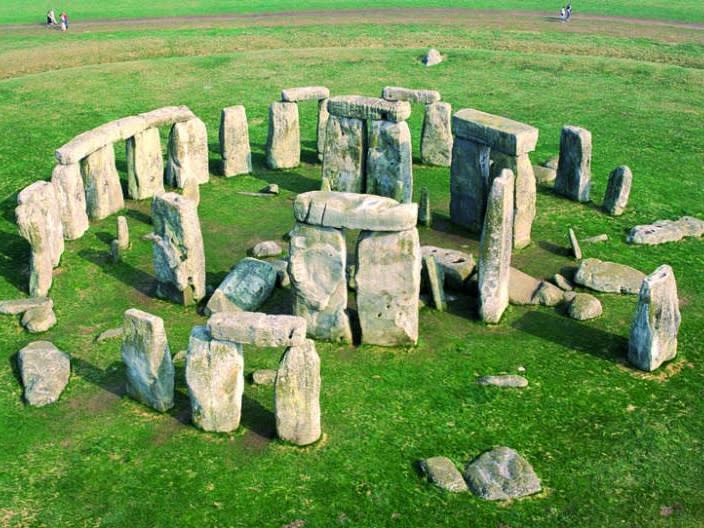
In my experience, knowing something about the place you are visiting, whether it is one of London 's best museums or a megalithic monument, makes your Stonehenge tour as enjoyable and satisfying as possible.
Beyond some extravagant theories such as the extraterrestrial hypothesis or the aforementioned Druid hypothesis, the truth is that it is not known with certainty why Stonehenge was erected. One of the most popular theories is that it was an astronomical observatory used by the priests of the time to study the stars and draw up a calendar. This was to help them to get more out of agriculture and livestock farming.
The solstices were decisive in determining the best harvest (in summer) and sowing (in winter) seasons, so that both moments acquired a special, almost magical character. For this reason, it is assumed that farmers celebrated both times around the Stonehenge structures, which were erected in line with the axes of the solstices.
Discover the neighbouring solar monuments

Other complexes related to the path of our star were erected around Stonehenge, as they are aligned with its movements.
Some of them, such as the wooden monument near Durrington Walls or the Neolithic burial mound at Maeshowe are really interesting. If you have the time and the opportunity (and you're not exhausted after enjoying the summer solstice at Stonehenge), you may well want to do some extra sightseeing.
Prices at Stonehenge during the summer solstice

If you' re visiting London in the summer, a must-do is to take an organised trip to Stonehenge from London. Entrance to the monument on the day is free, so you will only have to pay for the transport used to get there. In my article how to get to Stonehenge from London I explain the different possibilities that exist.
Stonehenge Midsummer Solstice Timetable
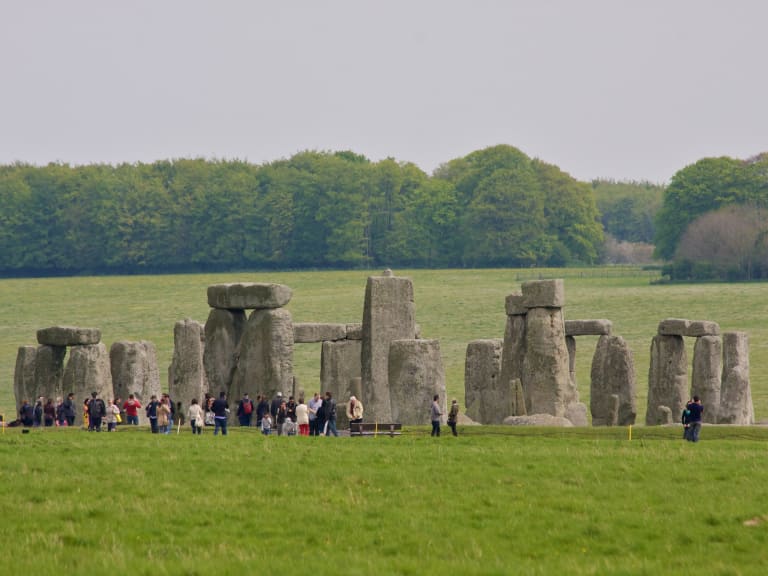
Those who want to start the celebration on the evening of 20 June to watch the sunset and want to arrive by car should note that the car park opens at about 19:00 (although I advise you to make sure in advance on the website of the company that manages Stonehenge), as well as the monument itself.
The car park usually fills up early, so it is best to arrive in plenty of time to avoid problems. Car entry (if not already full) is cut off at 6am on the 21st and entry to the monument at 8am, bringing the celebration to an end.
How to dress for the summer solstice at Stonehenge
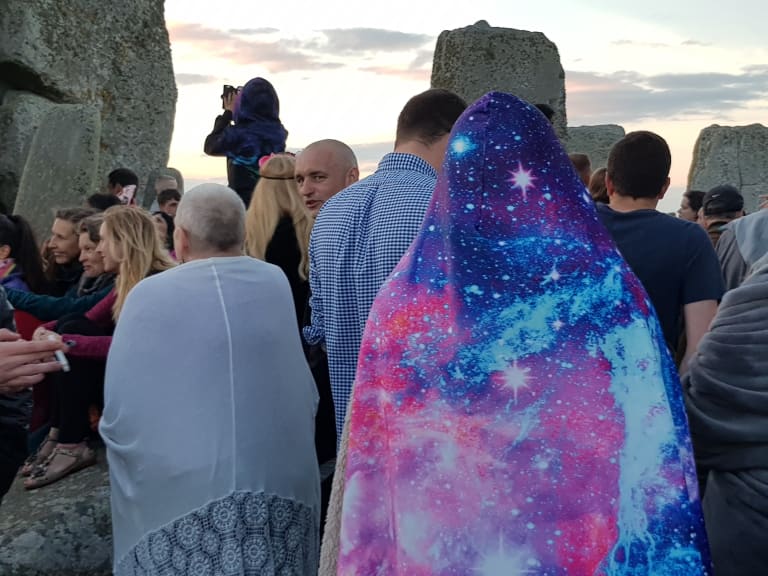
Unless you want to dress up as a druid or similar character, it's best to wear something warm. Although it's in the summer, the area is quite humid and it can get chilly at night. A thermal T-shirt can be a great addition. Don't forget to check the weather forecast and bring a mackintosh just in case.
You should also wear comfortable shoes, as the terrain is uneven. A good torch is almost essential to get from the Visitor Centre to the monument.
How to get from Salisbury to Stonehenge to see the solstice?

Public transport from London only goes to Salisbury, just a few miles from the monument.
Those who choose this option rather than a private car or organised tour will have no problems on the day. Special Sal isbury Reds buses run from Salisbury train station itself and will drop you off at the Visitor Centre. The timetables can be found on their website.
Once at the Visitor Centre you can choose to walk to the monument or take one of the buses to the Visitor Centre. If in doubt, ask one of the many volunteers who are stationed throughout the complex on the day.
I want to see the summer solstice at Stonehenge, but I can't travel on those dates
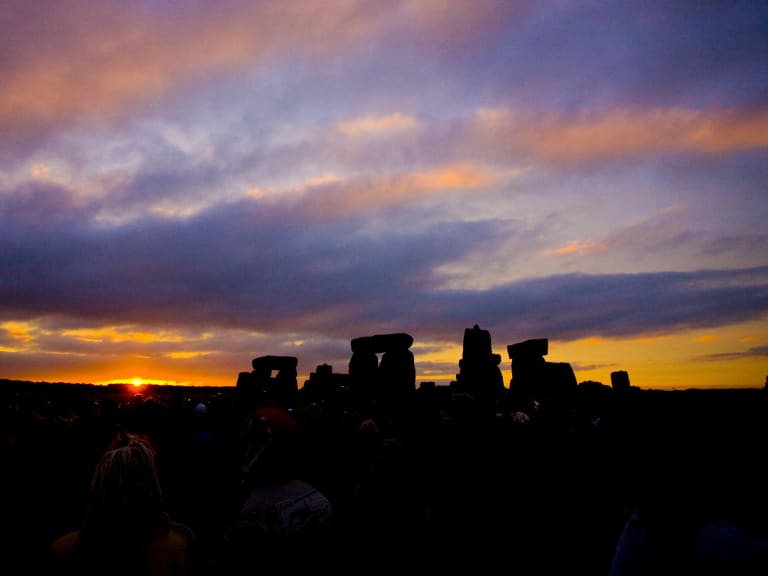
If everything I've told you has made you want to see the moment of sunrise at Stonehenge during the summer solstice, but you can't travel to the site, there is a possibility that may (somewhat) alleviate that desire.
For the last few years, the event has been broadcast by English Heritage on their social media channels. Although you won't be able to enjoy the incredible atmosphere that is generated, at least you will be able to see this beautiful moment live.
